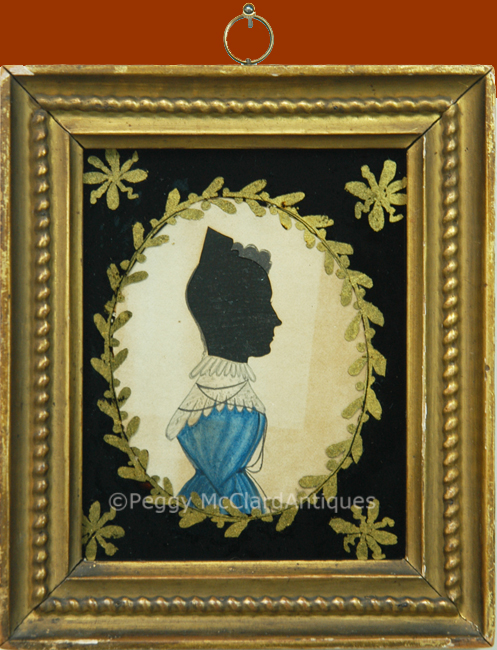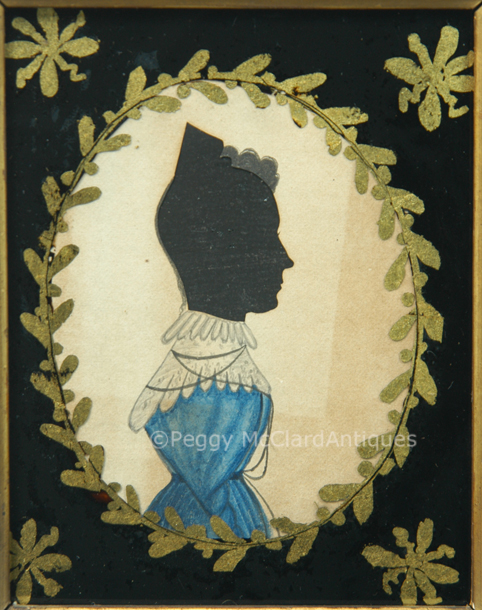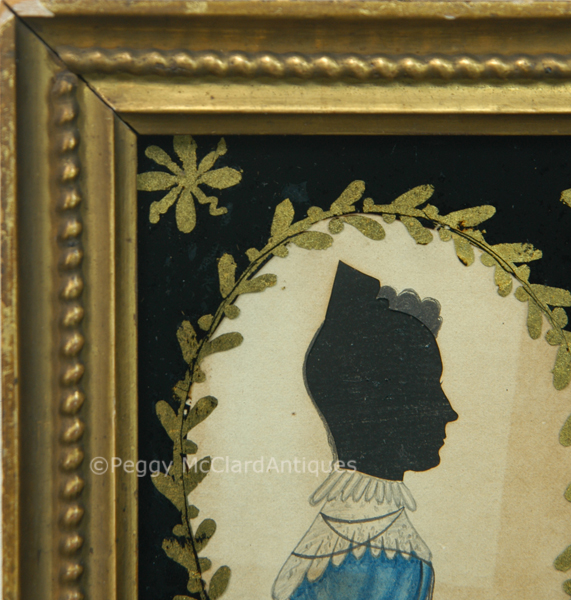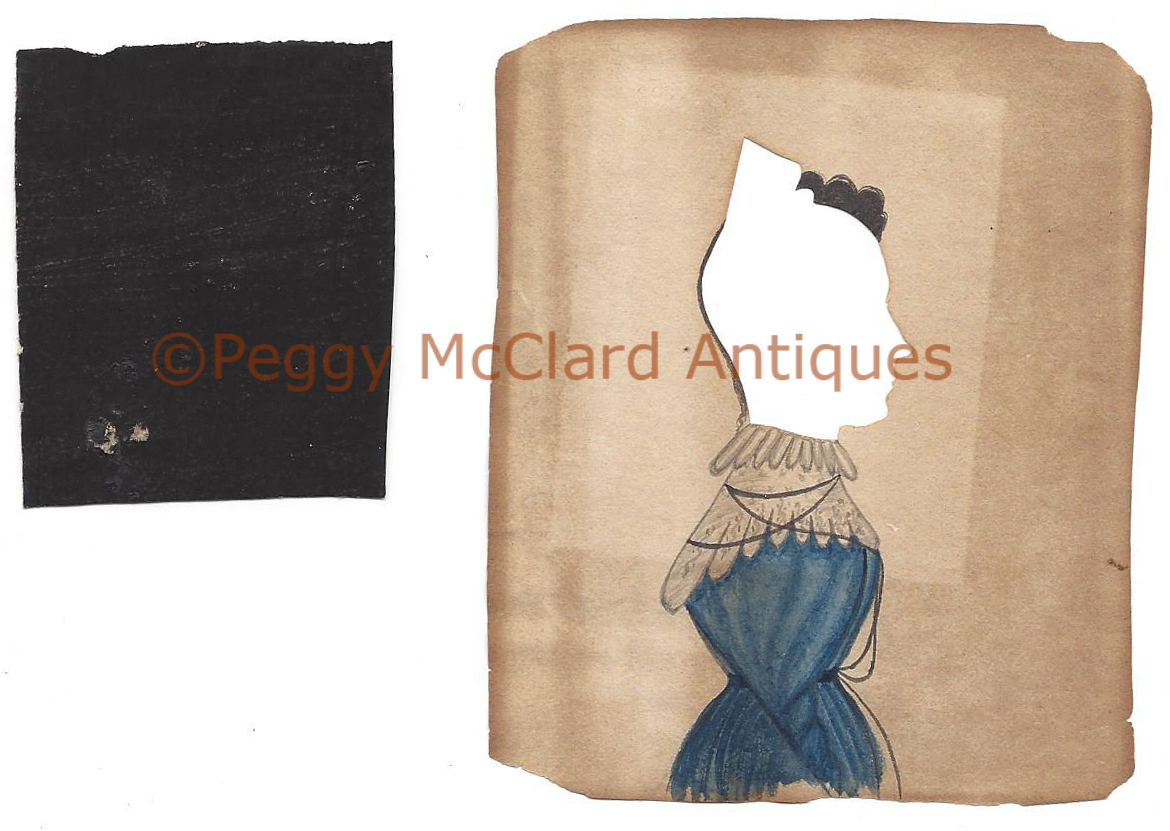
This is an excellent American folk portrait of a lady in a blue dress. The head is hollow cut and the body painted in watercolor. The profile is very well-executed showing a slight bump at the bridge of her nose (in my Cajun family we call this the “Cajun Bump” although mine is a bit higher up), a very slight double chin and a tiny, upturned eyelash. Her high haircomb is cut and the rolls of hair in front of the comb are painted in black watercolor as is the hair in the back of her head that ends in wispy tendrils at the nape of her neck. The artist has painted her in a blue dress with puffy sleeves that are either gigot or demi-gigot. I am guessing that the sleeves are full at the shoulder and, therefore, gigot. In either case, the top of the sleeves were puffy because they were stuffed. In either of the styles suggested, the sleeves get smaller below the elbow until they end tightly at the wrist. I absolutely love the way the artist depicted the puffiness with swirls of darker blue. The silhouettist also gave the lady a separate high white lace collar with Vandyking at both the top and bottom, creating a turned down ruffed collar. The lace is depicted with light grey watercolor. She wears a very long chain that is looped around her collar then tucked into her belt and falling even further below the belt. The belt is at her natural waist.
This exciting silhouette is housed in a period Federal Period gilt frame with a carved rope decoration in the cove. The gilding is quite dingy (which I love) and it has some dings at the edges that you can see in the photos. The lady is also behind a period églomisé mat that has some wear, black painted restoration and is sealed as a last coat. The 8-petaled flower corner designs are unusual for their alternating squiggly petals. I put black acid-free paper between the églomisé and the silhouette to prevent any sticking to the sealant. The silhouette paper is toned with a lighter space where the original blackened paper protected the paper from the wood back. The original blackened paper is still behind the silhouette and it is a small piece of 19th century wallpaper that the artist blackened on one side. I love finding tidbits like this by opening the artwork! The lady did not begin life behind this églomisé because there is no oval discoloration to the paper as there would be if she had only been exposed to UV light from behind an oval portal. She also has no paint remnants as she would if she had been touching the unsealed paint. But the combination is correct for the period and this is a really fantastic folk silhouette. She’s one of those special ones that I originally bought to add to my collection but find that I have another that is by the same hand. This one is actually better than the one in my collection, but I have a place for the other so….my loss is your gain! Circa 1825.
#5595 $3500




